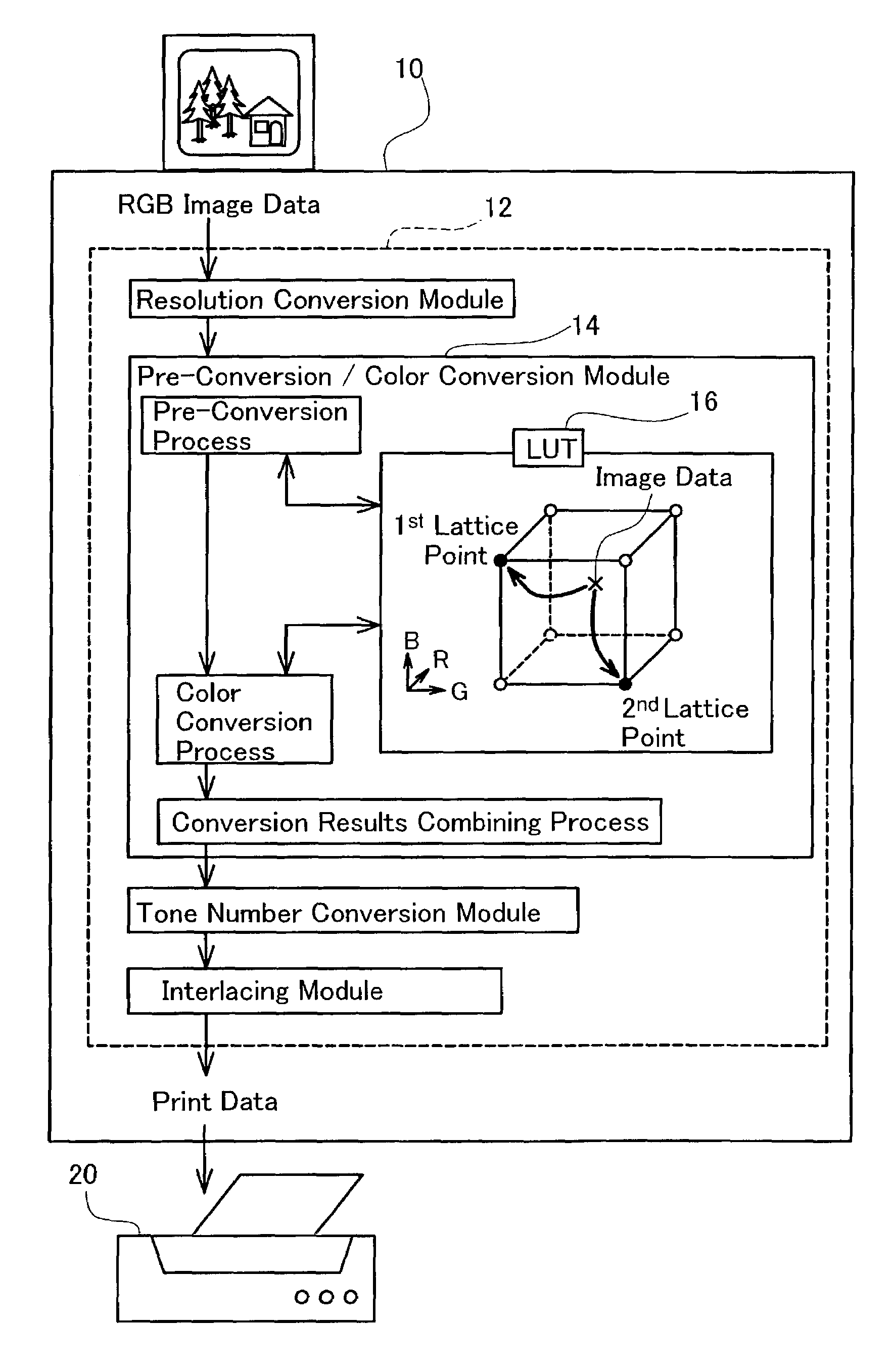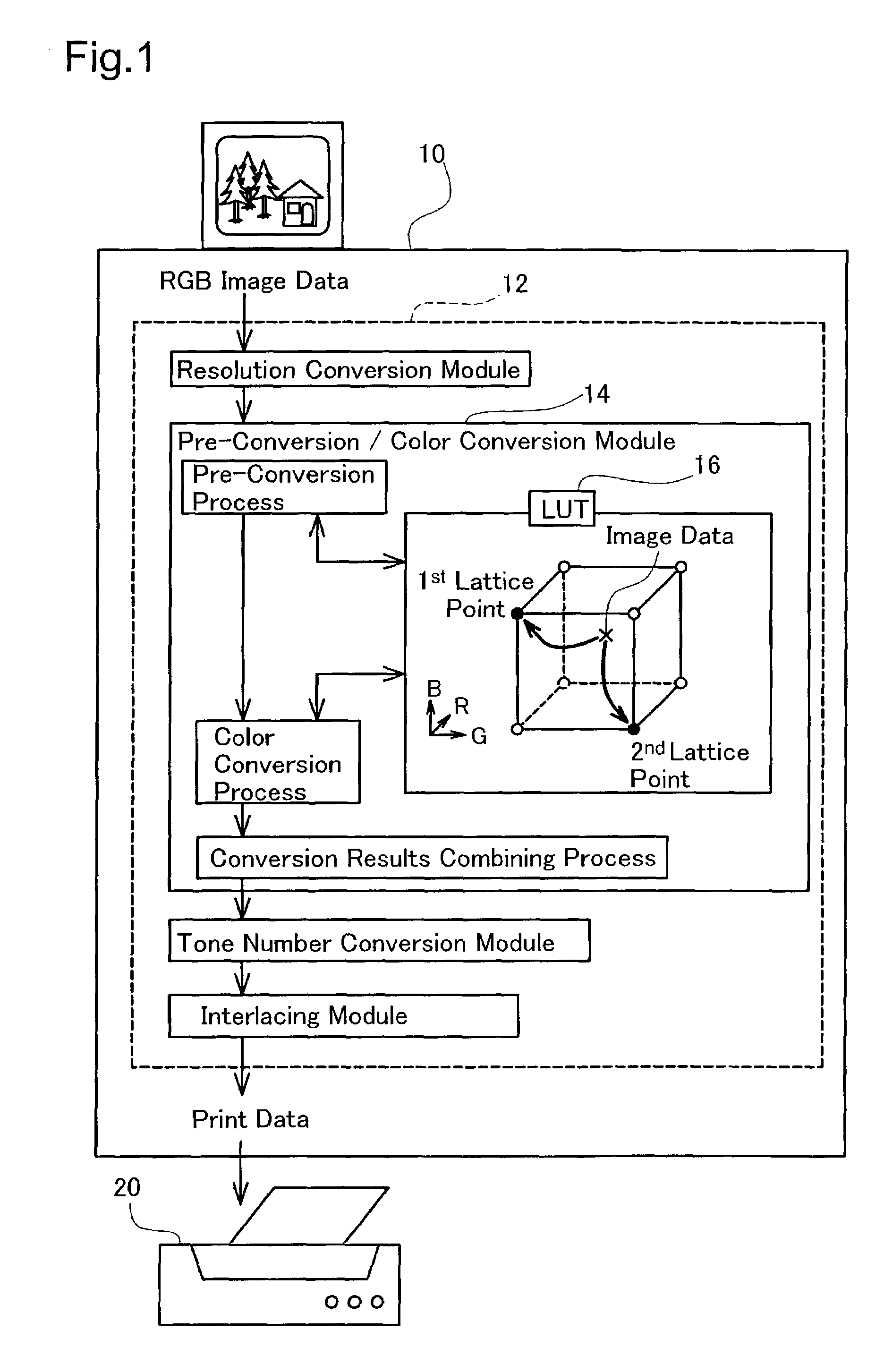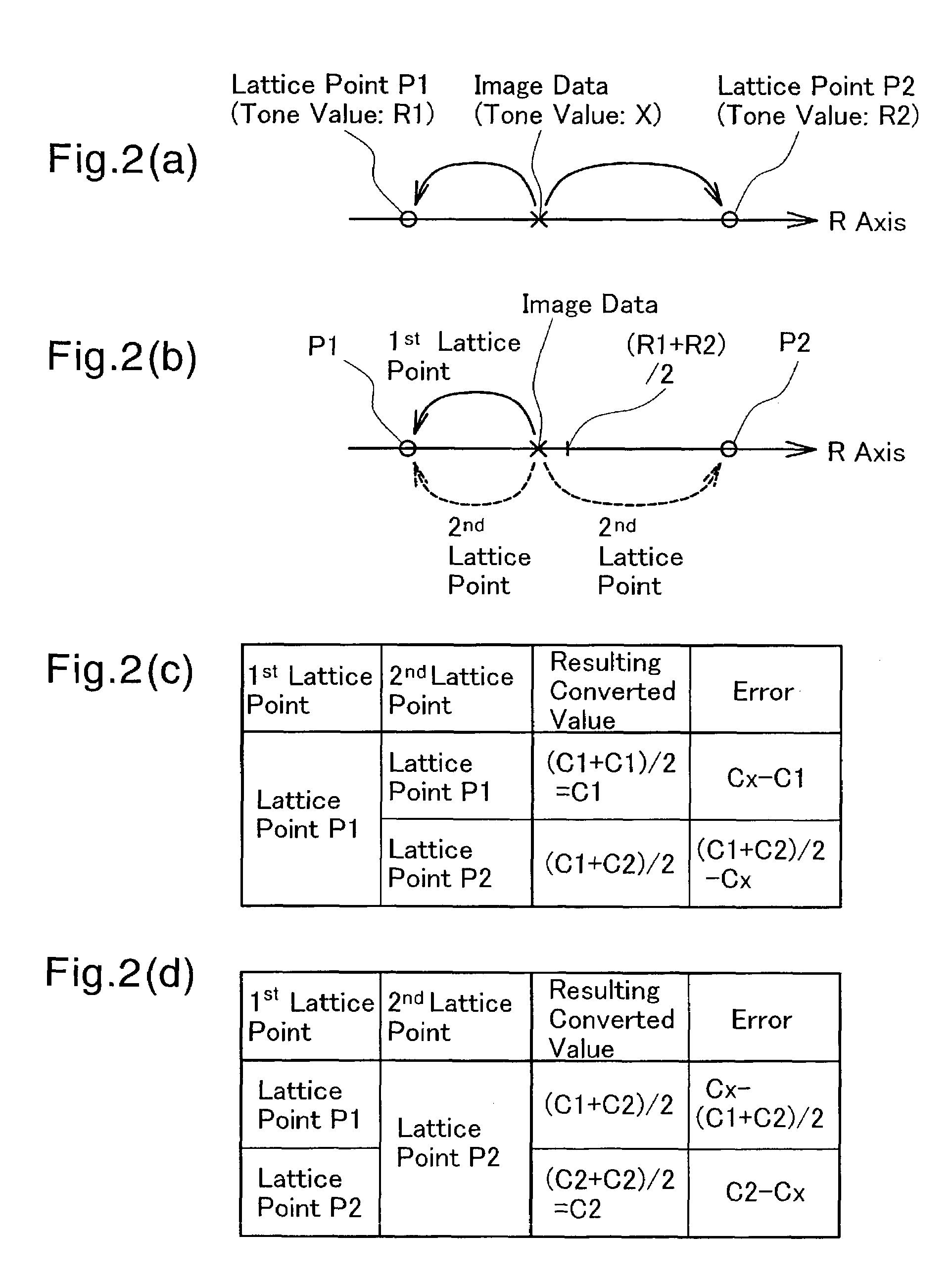Method of correcting color image data according to correction table
a color image data and correction table technology, applied in the field of image processing method for correcting color image data, can solve the problem of slightly increasing the total processing time, and achieve the effect of reducing the pre-conversion error and high-speed output of high-quality image data
- Summary
- Abstract
- Description
- Claims
- Application Information
AI Technical Summary
Benefits of technology
Problems solved by technology
Method used
Image
Examples
first embodiment
C. First Embodiment
C-1. Construction of System
[0169]FIG. 6 schematically illustrates the construction of a computer 100 as an image processing apparatus of a first embodiment according to the present invention. The computer 100 corresponds to the computer 10 shown in FIG. 1 and is constructed as a known computer including a CPU 102, a ROM 104, and a RAM 106, which are mutually connected via a bus 116.
[0170]The computer 100 also includes a disk controller DDC 109 for reading data from a flexible disk 124 or a compact disc 126, a peripheral equipment interface P / IF 112 for transmission of data to and from peripheral equipment, and a video interface V / IF 112 for actuating a CRT 114. A color printer 200 (discussed later), which corresponds to the color printer 20 shown in FIG. 1, and a hard disk 118 are linked with the P / IF 108. Connection of a digital camera 120 or a color scanner 122 to the P / IF 108 enables images transmitted from the digital camera 120 and those read by the color sca...
second embodiment
D. Second Embodiment
[0244]The procedure of the first embodiment allocates the image data Dx to the two lattice points, the first lattice point and the second lattice point. The number of lattice points, to which the image data Dx is allocated, is not restricted to 2, but may be greater than 2. The following describes such a case as a pre-conversion / color conversion procedure of a second embodiment.
D-1. Pre-Conversion Process of Second Embodiment
[0245]FIG. 23 is a flowchart showing a processing routine of allocating image data to multiple lattice points (pre-conversion process) carried out in the second embodiment. This process is executed after the step of reading image data in the pre-conversion / color conversion process shown in the flowchart of FIG. 10. The primary difference from the pre-conversion process of the first embodiment discussed previously with reference to the flowchart of FIG. 11 is an increase in number of the lattice points, to which the image data is allocated, to...
third embodiment
E. Third Embodiment
[0271]In the first and the second embodiments discussed above, N noises are used for allocation of the image data to N lattice points. For example, the procedure of the first embodiment uses the first noise Ns1 for setting the first lattice point and the second noise Ns2 for setting the second lattice point. The number of noises may, however, be different from the number of lattice points, to which the image data is allocated. Only one noise may be used for allocation of the image data to multiple lattice points. This application is discussed below as a pre-conversion process of a third embodiment.
E-1. Pre-Conversion Process of Third Embodiment
[0272]FIG. 30 is a flowchart showing a processing routine of the pre-conversion process carried out in the third embodiment.
[0273]When the program enters the pre-conversion process of the third embodiment, the printer driver 12 first detects the coordinate values of each lattice point in the vicinity of target image data Dx ...
PUM
| Property | Measurement | Unit |
|---|---|---|
| processing | aaaaa | aaaaa |
| color image | aaaaa | aaaaa |
| lattice points | aaaaa | aaaaa |
Abstract
Description
Claims
Application Information
 Login to View More
Login to View More - R&D
- Intellectual Property
- Life Sciences
- Materials
- Tech Scout
- Unparalleled Data Quality
- Higher Quality Content
- 60% Fewer Hallucinations
Browse by: Latest US Patents, China's latest patents, Technical Efficacy Thesaurus, Application Domain, Technology Topic, Popular Technical Reports.
© 2025 PatSnap. All rights reserved.Legal|Privacy policy|Modern Slavery Act Transparency Statement|Sitemap|About US| Contact US: help@patsnap.com



